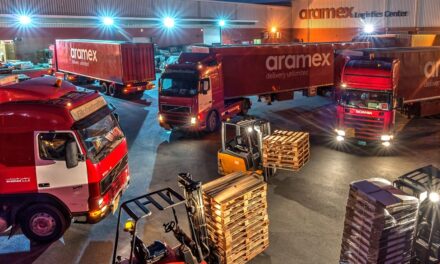
Aramex reveals revenue and profit growth for Q1
Aramex revealed that company revenue grew by 12% during Q1 2011, despite “unrest in a number of its core markets in the Middle East and North Africa (MENA) region”. Revenue rose to AED 595m, up from AED 530m in the corresponding period of 2010, whilst the company’s net profits jumped to AED 49.8m, up from AED 47.5m recorded during the same period of last year – an increase of 5%.
The financial results were for the three month period ending 31 March 2011.
“We are very pleased with our financials for the first quarter of this year, which were driven by strong performances in the Gulf Cooperation Council countries, where revenues have experienced a substantial increase since the beginning of 2011,” said Fadi Ghandour, Aramex founder and CEO.
“All our product offerings were in positive territory; I am especially encouraged by the double digit growth in our international express business, which is the biggest contributor to our operating income.”
In addition, the continued growth of Aramex’s business in European Markets, and the recent acquisitions in Africa and Asia contributed to the company’s positive overall performance.
“As we continue to expand our presence around the world, capturing growth opportunities in emerging markets in Africa and Southeast Asia, Aramex’s position here in the Middle East remains consistently strong,” said Ghandour, adding that Aramex witnessed challenging conditions in the first quarter of this year in MENA markets, such as Egypt and Bahrain, and the company has also voluntarily suspended its operations in Libya.
“Amidst regional political instability, higher fuel prices and global inflationary pressure, our outlook for the rest of this year remains cautious,” he said. “However, our healthy performance in the first quarter is a clear indicator that Aramex continues to successfully adapt to rapidly evolving market conditions.”
Ghandour added that Aramex remains committed to its long-term expansion strategy, with further acquisitions in East Africa and Central Asia.











